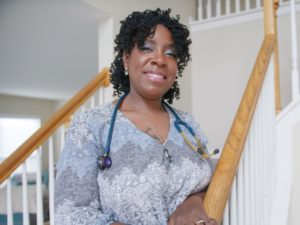 How do we expand help for women and babies in a post Roe v Wade environment? One possibility is to provide additional options that will increase healthy deliveries through personal care and education, particularly with low-income women.
How do we expand help for women and babies in a post Roe v Wade environment? One possibility is to provide additional options that will increase healthy deliveries through personal care and education, particularly with low-income women.
One option is not new; however, a study shows it is becoming a more viable alternative and has provided a roadmap for increasing accessibility for the women who may need it most.
A midwife offers personal care that goes beyond the birth of the child. She can take time to educate a new mother on nutrition, exercise and breastfeeding, and can develop a close relationship with her patient.
Research from the University of British Columbia studied published data detailing the status of midwifery in all 50 states. Examples of the criteria are:
- State laws and regulations on midwives’ credentialing
- Midwives’ ability to provide services at a client’s home or at birth centers,
- Midwives’ authority to prescribe medication
- Midwives’ access to hospitals
- The degree to which Midwives are reimbursed through Medicaid
Based on these and other criteria, each of the 50 states was scored in this study. None of the states received a perfect score of 100, so researchers believe there is still much work to be done. See how your state compares with the highest score of 61 in Washington State, and North Carolina with the lowest score of 17.
Saraswathi Vedam, an Associate Professor in the Department of Family Practice at the University of British Columbia led the research. She said, “In marginalized communities in the U.S., where the health system is often stretched thin, expanding access to midwives and increasing their responsibilities could be a feasible strategy for improving maternity care.”
When a midwife is involved in the pre-care and birth, the outcomes of natural birth of healthy children can increase. The Model of Midwife Care includes:
- Monitoring the physical, psychological and social well-being of the mother throughout the childbearing years
- Providing the mother with individualized education, counseling and prenatal care, continuous hands-on assistance during labor and delivery, and postpartum support
- Identifying and referring women who require obstetrical attention

This research from the University of British Columbia is a hopeful sign that midwifery is being closely examined with a goal of making it more accessible to women. The desire of creators of the study is to provide useful information to legislatures going forward.
 With a post Roe environment in mind, it can be used to craft regulations and laws that make a state more friendly to the Midwife Model of Care. Expanding quality birthing options for women will help mothers and their babies truly thrive.
With a post Roe environment in mind, it can be used to craft regulations and laws that make a state more friendly to the Midwife Model of Care. Expanding quality birthing options for women will help mothers and their babies truly thrive.
While some physicians express concerns with home birth. We support women doing their own research so they can be informed about their birth choices.
My thanks to Kate McAuliffe for her research and assistance with this edition of The Latest.
Advocating for both mother and child,

Leave a Reply